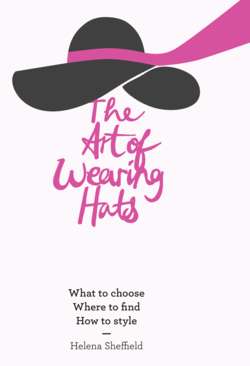Читать книгу The Art of Wearing Hats: What to choose. Where to find. How to style. - Helena Sheffield - Страница 7
A Brief History of Hats —
Оглавление3,300 BC – The earliest known version of a hat is preserved alongside its owner in the ice of a mountain on the border of Austria and Italy, proving that even in the Bronze Age people knew how to dress. Or just keep their heads warm.
3,200 BC – Tomb paintings depict Egyptian men wearing conical straw hats or headdresses.
AD 800 – St Clement, English patron saint of hat-makers, accidentally discovers felt. You could say that this occurrence ranks alongside similar accidental discoveries, such as penicillin and the Slinky.
1571 – An Act of Parliament is passed decreeing that people over the age of six must wear a hat on Sundays. Of course, this only applies to the ‘commoners’.
1597 – The above law is revoked for being far too ridiculous.
17th century – The term ‘milliner’ is first used to describe hatmakers. Milan is already considered a centre of fashion, so the term suggests that only ‘Milan-ers’ make hats.
18th century – The French Revolution makes hats unpopular in France (perhaps for the first and last time), as they’re seen to indicate social status. It’s deemed fashionable – and safer – to appear democratic, so hats drop out of use.
19th century – Women’s necks are considered too erotic for public display, so bonnets are fashioned with frills and ribbons at the back to cover them up.
1914–1918 – During the First World War fabric is scarce, so plumes of feathers and overly adorned hats are frowned upon for being unpatriotic. Hats become much smaller and simpler.
1920s – Women’s necks are apparently still considered erotic, as they’re all being shown off by shocking new hairstyles and hats that accentuate their length.
1939 –1945 – In complete contrast to the First World War, hats are one of the only items of clothing not affected by severe rationing. In France berets are adopted as a symbol of resistance against Nazi occupation, and explosions of feathers and flowers are admired rather than shunned.
Late 1960s – Fashions begin leaning towards the daring young people, and hats gradually fall from grace, perceived as the preserve of older, more conservative dressers.
2011 – The wedding of the century takes place between Prince William and Kate Middleton, bringing the hat back with resounding success. Royalty and guests wear hats with panache, style and unfailing confidence, finally returning them to the public eye.
2016 – A book so brilliant, useful and witty is published, championing the hat and inspiring a revolution of new hat-wearers, that it will later be heralded as the tome that changed the fashion industry for good. (Clue: you’re reading it.)
